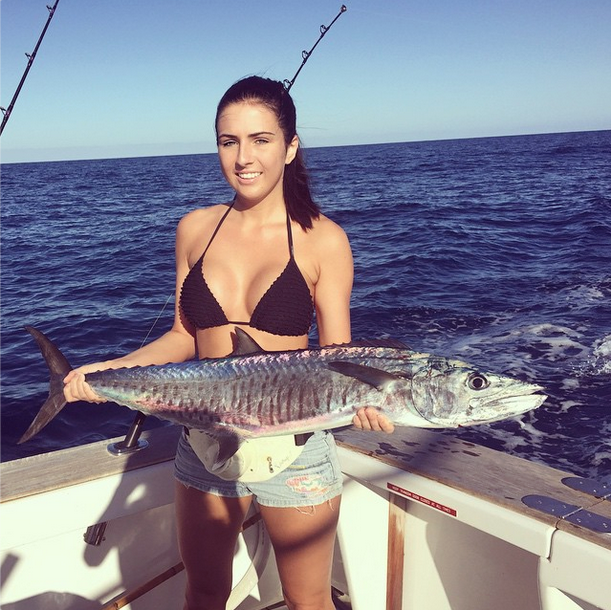King Mackerel
Scomberomorus cavalla
Also known as Kingfish or Kings
The king mackerel is a slender, streamlined fish, slightly flattened from side to side with a tapered head. Its color ranges from an iridescent bluish green on its back to its silvery sides. Two dorsal fins can fold back in to a groove to enhance speed, short pectoral fins on each side just behind the head; pelvic fins below the pectorals and a row of small finlets extend from the dorsal and anal fins to the tail. The lateral line starts near the top of each gill drops sharply below the second dorsal fin and ends near the tail.
The mackerels are true members of the tuna family and are Western Atlantic species. Although the Kings don’t have the endurance of the tuna, they are unmatched for their speed and agility. They are found both nearshore and offshore and are common form North Carolina to Brazil. They have preference for water temperature above 20deg.C (68deg. F) and salinity ranging from 32 to 36 ppt.
The King Mackerel is a schooling and migrating fish that spends the winter months in south Florida and moves to more northerly waters in spring / summer. The Gulf population is considered to be separate from the Atlantic population. The separate populations are thought to mix in the winter months from east central Florida southward past Key West.
Spawning occurs in mid-summer north of Miami in the Atlantic and the northern area of the Gulf of Mexico.
King mackerel are constantly feeding carnivores that can attack with high speed, powerful jaws and razor-like teeth. They feed on all and any available food but favor jacks, sea trout, sardine like fishes, ribbonfish, herring, shrimp and squid.
King mackerel are a highly sought after gamefish. They are a challenging catch that puts up a spectacular fight by leaping and sky rocketing out of the water. They are taken on hook and line gear with both live or dead bait and artificial lures. They can be caught from shore or pier, from a boat at anchor, drifting or trolling. Some of the baits used are pogies, thread herring, Spanish sardine, ballyhoo, mullet, etc. Lures that have shown to be productive are spoons, jigs and other flashy sub-surface lures or large fish like plugs.
Fishing gear should be no less than 20-pound line and tackle. Higher rated tackle may be recommended if you are targeting larger kings. Usually a heavier wire or mono leader is required to survive those sharp teeth.
- Jay Mastry - March 26, 2024
- Captains Corner, Gorta - March 23, 2024
- Dave Zalewski - March 12, 2024











